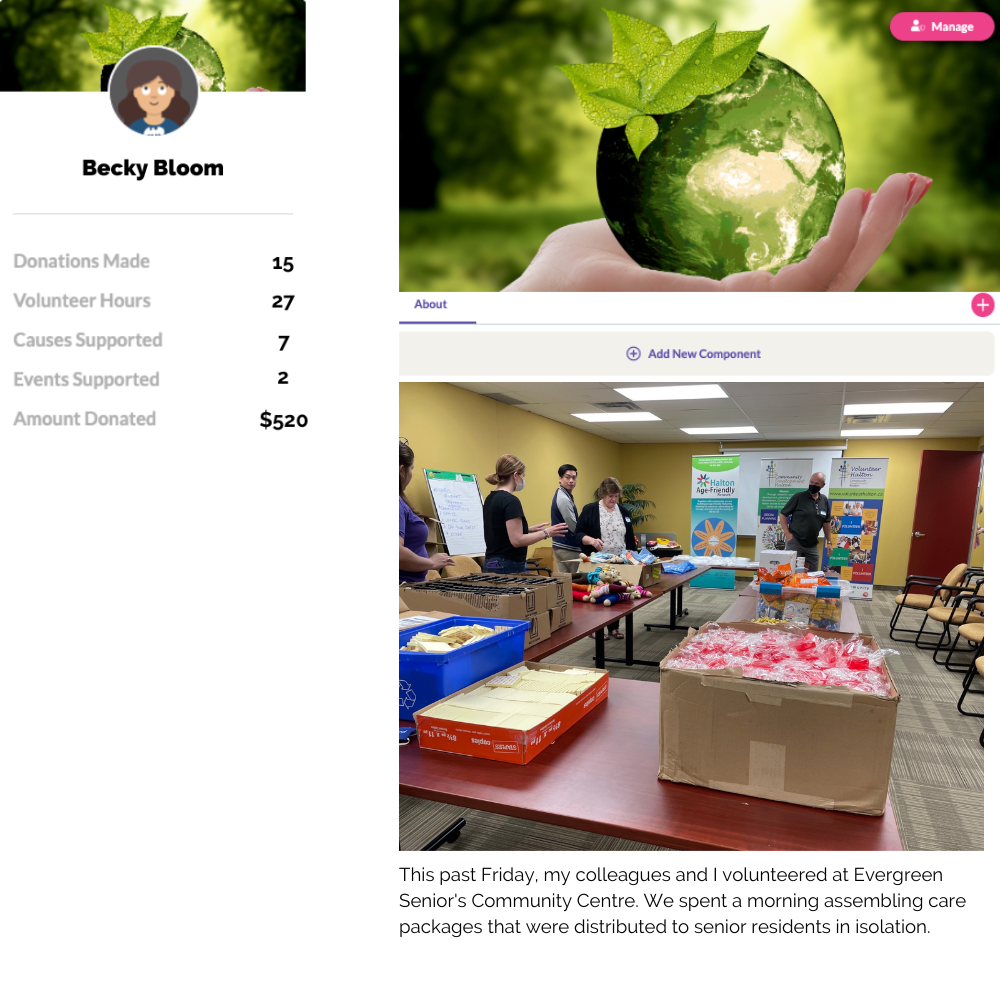- Establishing a social mission
- Identifying focus areas
- Pursuing numerous CSR initiatives
What’s missing from the corporate social responsibility program described above?
An employee-led CSR approach.
Employees want more than to passively participate in a company’s corporate social responsibility (CSR) program; they want to be active participants who help mould how their company’s CSR programs are executed.
Interested in developing an employee-led CSR program by empowering your employees to lead CSR efforts? We discuss 4 tactics on how you can equip your employees to become impactful changemakers on behalf of your organization.

1) Let employees choose social causes
Employees who have a chance to choose causes that align with their preferences are more likely to take part in CSR efforts on behalf of that cause (both in the workplace and personally). There’s also a greater chance they’ll continue contributing to those causes long-term when it piques individual interest and desire.
For example, an employee might be interested in nonprofits and charities that focus on mental health. Through an employee-led CSR program, employees can browse an online discovery forum (which can be provided by their workplace) to find a cause(s) they truly believe in helping.
2) Allow employees to find volunteer & fundraising opportunities
After employees help choose which social causes to support, their next responsibility is to look for specific volunteer, donation, event, and fundraising opportunities they can participate in within those causes.
Here’s how to ensure your employees are aware and motivated to participate in local opportunities:
Build-in corporate giving days
To encourage employee giving and maximize participation, employees should receive several paid days throughout the quarter to partake in CSR efforts. Paid time off, which means added encouragement from their employer to go out and get involved, will result in greater participation.
Create a sharing board
Regardless of which messaging platform your company uses to communicate internally, create a separate channel centred around the dissemination of corporate giving opportunities.
Your employees can take the lead here, sharing any volunteer, donation, or fundraising opportunity they come across.
Let employees lead company-wide CSR efforts
If your employees are frequently participating and sharing their CSR efforts, why not let them organize a company-wide initiative by forming an employee resource group (ERG)? These dedicated and enthusiastic individuals are the perfect candidates to organize a company-wide volunteer day or fundraiser and enlist the support of their colleagues.
For instance, a group of like-minded individuals join forces to amplify their organization’s CSR efforts. Provide them with complete autonomy to execute a fundraiser independently of management, which includes:
- Choosing a nonprofit or charity.
- Organizing and executing the fundraiser in coordination with the cause.
- Creating an event page to encourage internal participation.
- Taking photos and videos throughout the day to share later.

3) Enable employees to share their social impact
Sharing social impact shouldn’t just be led from the organizational level. Employee-led CSR programs should allow employees to take control: sharing the good they are doing and the results they are achieving at an individual level.
When employees share their social impact, this can include:
- Posting a photo from their recent volunteer day.
- Sharing the amount of money they have recently donated.
- Displaying the total number of causes they have supported.
Some benefits of employees sharing their social impact are:
- Enhanced exposure– An employee’s connections can see how they are giving back to the community on behalf of their workplace.
- Increased connections– Their posts might reach another charity or nonprofit on social media that is interested in gaining support from a new source of help.
- Maximum transparency- When an employee’s actions are made visible—and backed by data and photos—this breeds greater trust among their connections.
How can social impact be shared? Aside from employees posting on their social networks and your company featuring them on your social media channels, consider a social impact platform.
A social impact platform enables all employees involved in your CSR programs to post about each initiative they take part in on their individual social impact profiles. Their colleagues, nonprofits, and passionate changemakers they connect with on the platform can view the good they are doing at all times.

4) Encourage employees to give continual feedback
When you make employees core players in your company’s purpose, you must go beyond letting them select and participate in causes close to their hearts—you should also encourage employees to give feedback at any time.
In the end, you want as many of your employees to feel comfortable sharing their social impact, executing company-wide CSR efforts, and choosing social causes that they personally believe in.
When asking for feedback, some questions to consider asking your employees are:
- How else can we help you discover nonprofits and charities that match your interests?
- Are there any other company-wide initiatives (aside from volunteer days and fundraising events) that you would like to lead?
- Are there any other platforms you would like to use to share your social impact?
Employees who have the autonomy to choose which social causes they want to support, share their social impact, and give feedback at any time are more likely to participate long-term in a CSR program.
A CSR program wouldn’t have the same success if it weren’t for the input from your employees. Therefore, why not give them the opportunity to take the lead in certain aspects of your company’s CSR program to achieve greater results?



